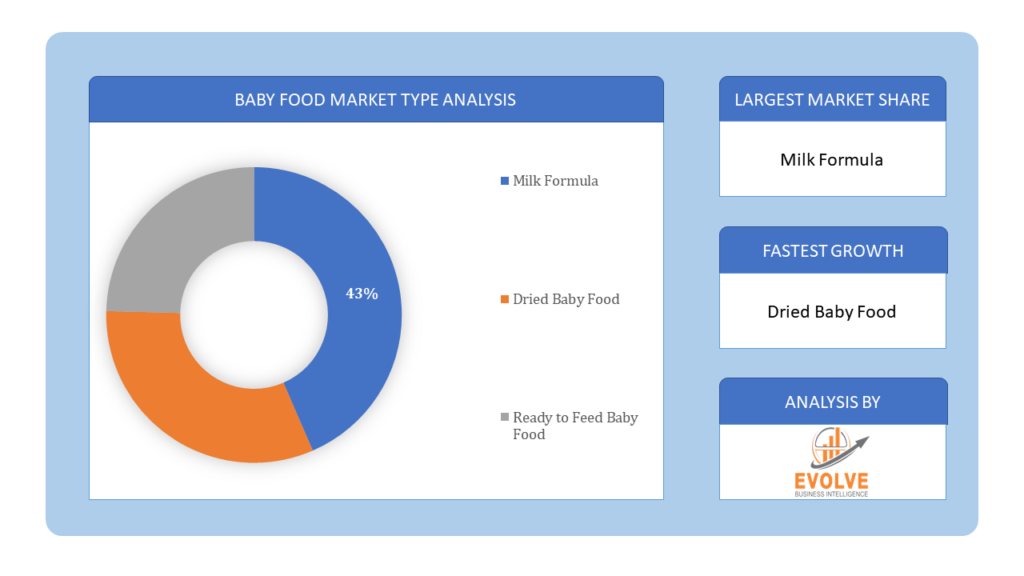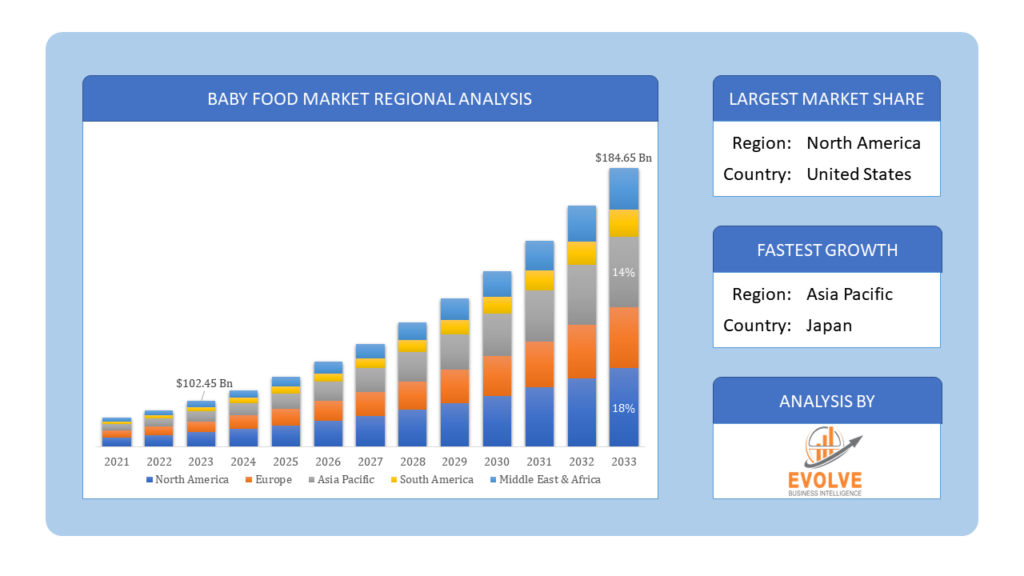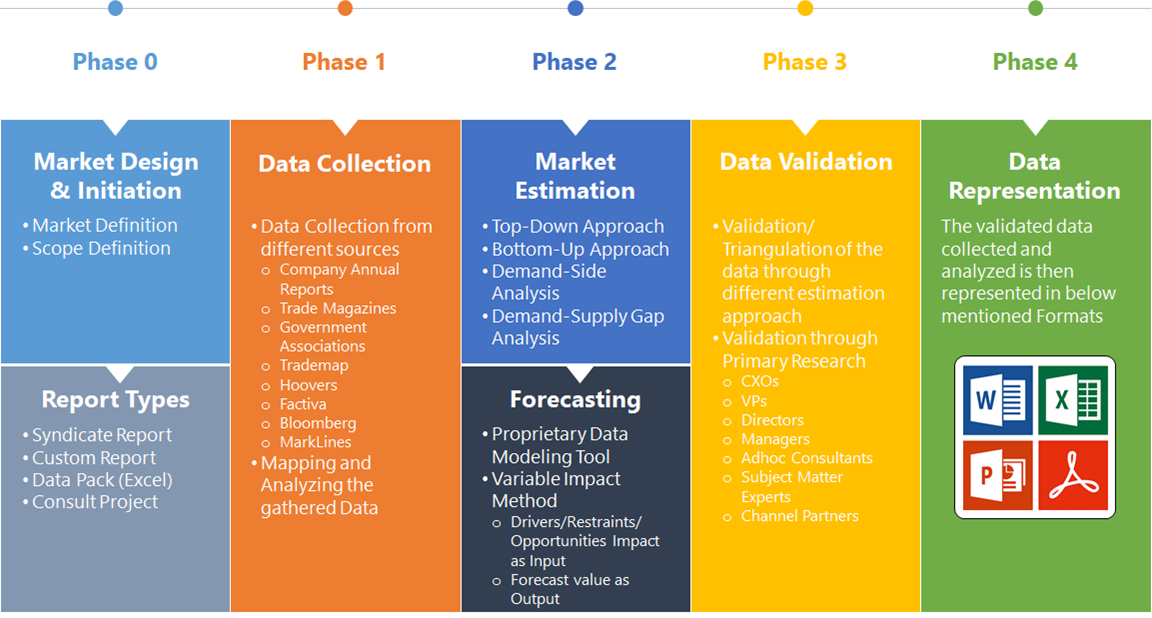Baby Food Market Overview
The Baby Food Market Size is expected to reach USD 144.09 Billion by 2033. The Baby Food industry size accounted for USD 54.74 Billion in 2023 and is expected to expand at a compound annual growth rate (CAGR) of 38.68% from 2023 to 2033. Soft, easily digestible food made specifically for infants between the ages of four to six months and three years is known as baby food. There are liquid and solid baby food options. The baby food comes in a variety of tastes and variations. It has all the nutrients needed for a child’s development and is simple to digest. By giving newborns baby food, undernutrition issues like the nonlactation problem can be resolved. The rising level of urbanization, rising disposable income, and shifting lifestyles have made this dish increasingly accepted. The growing market for infant food has given producers the chance to diversify their product lines and draw in additional clients.
Global Baby Food Market Synopsis
The Baby Food market experienced a positive impact due to the COVID-19 pandemic. The baby food market saw a mixed impact from COVID-19. While initial panic buying led to short-term spikes in demand, prolonged lockdowns and economic uncertainty dampened consumer spending, affecting the market negatively. However, increased awareness about health and nutrition, coupled with a shift towards online shopping, provided some resilience. Overall, the market faced challenges but also opportunities for innovation and adaptation to changing consumer behaviors.
Global Baby Food Market Dynamics
The major factors that have impacted the growth of Baby Food are as follows:
Drivers:
⮚ Organic and natural products
There’s a growing preference for organic and natural baby food products, as parents seek healthier options for their infants. Manufacturers are responding to this demand by offering a wide range of organic and natural baby food options.
Restraint:
- Price sensitivity
Price sensitivity among consumers, particularly in emerging markets, can limit the adoption of premium baby food products. Many parents, especially those with lower incomes, prioritize affordability over brand loyalty or product differentiation, leading to intense price competition within the market.
Opportunity:
⮚ Digital marketing and e-commerce
The proliferation of digital platforms and e-commerce channels offers baby food brands unprecedented opportunities to reach and engage with consumers. Digital marketing strategies, including social media advertising, influencer partnerships, and targeted online campaigns, can effectively reach millennial parents and drive brand awareness and sales.
Baby Food Market Segment Overview
By Type
 Based on the Type, the market is segmented based on Milk Formula, Dried Baby Food, Ready to Feed Baby Food, and Others. Dried baby food follows closely, offering convenience and shelf stability while retaining nutritional value. Ready-to-feed baby food is gaining popularity among busy parents, providing instant nourishment without the need for preparation. These segments collectively cater to diverse needs, ensuring infants receive optimal nutrition for healthy growth and development.
Based on the Type, the market is segmented based on Milk Formula, Dried Baby Food, Ready to Feed Baby Food, and Others. Dried baby food follows closely, offering convenience and shelf stability while retaining nutritional value. Ready-to-feed baby food is gaining popularity among busy parents, providing instant nourishment without the need for preparation. These segments collectively cater to diverse needs, ensuring infants receive optimal nutrition for healthy growth and development.
By Product
Based on the Product, the market has been divided into Baby Soups, Frozen Baby Foods, Baby Snacks, and Baby Cereals. Within the baby food market, baby cereals dominate as a popular choice among parents seeking convenient and nutritious options for their little ones. These cereals offer essential nutrients and are often a go-to for early-stage feeding. While baby snacks and frozen baby foods offer variety and convenience, baby cereals remain a staple due to their versatility and widespread acceptance among caregivers globally.
By Distribution Channel
Based on Distribution Channel, the market has been divided into Supermarkets, Hypermarkets, Small Grocery Retailers, Health and Beauty Retailers, and Others. Each channel offers a unique shopping experience, ensuring accessibility and convenience for parents seeking quality nutrition for their infants and toddlers.
Global Baby Food Market Regional Analysis
Based on region, the market has been divided into North America, Europe, Asia-Pacific, the Middle East & Africa, and Latin America. The area of North America is anticipated to dominate the market for the usage of Baby Food, followed by those in Asia-Pacific and Europe.
 Baby Food North America Market
Baby Food North America Market
North America dominates the Baby Food market due to several factors. The market for infant food is thought to be dominated by North America because of the region’s fast urbanization and rising proportion of working mothers. Because of its growing population, the existence of emerging economies, the region’s decreasing infant mortality rate, and rising awareness of the importance of providing babies with a healthy diet, Asia Pacific is predicted to see considerable growth in the baby food market. The market is anticipated to grow more rapidly in Europe because there are so many producers of goods and suppliers of raw materials there. Manufacturers are more competitive now that they are more numerous, and this has caused them to diversify their product lines in an effort to obtain a competitive edge.
Baby Food Asia Pacific Market
The Asia-Pacific region has been witnessing remarkable growth in recent years. The Asia Pacific region is a significant player in the global baby food market, driven by factors such as rising disposable incomes, urbanization, and increasing awareness about infant nutrition. Countries like China and India are witnessing a surge in demand for baby food products due to growing populations and changing lifestyles. The market in Asia Pacific is characterized by a wide range of product offerings, including milk formula, baby cereals, and ready-to-feed options, catering to diverse consumer preferences.
Competitive Landscape
The competitive landscape includes key players (tier 1, tier 2, and local) having a presence across the globe. Companies such as Mead Johnson, Nestle, DANONE, Abbott laboratories, and Friesland Campina are some of the leading players in the global Baby Food Industry. These players have adopted partnership, acquisition, expansion, and new product development, among others as their key strategies.
Key Market Players:
- Mead Johnson
- Nestle
- DANONE
- Abbott laboratories
- Friesland Campina
- Bellamy Organics
- HJ Heinz
- Hero-Group
- Perrigo Company
- Hain Celestial Group
Key development:
In September 2023, Nestlé, a major player in the baby food market, announced a significant development with the introduction of innovative baby food products aimed at addressing specific nutritional needs of infants and toddlers. This launch showcased Nestlé’s commitment to providing high-quality, nutritious options for parents worldwide, further solidifying its position as a leader in the industry.
Scope of the Report
Global Baby Food Market, by Type
- Milk Formula
- Dried Baby Food
- Ready to Feed Baby Food
- Others
Global Baby Food Market, by Product
- Baby Soups
- Frozen Baby Foods
- Baby Snacks
- Baby Cereals
Global Baby Food Market, by Distribution Channel
- Supermarkets
- Hypermarkets
- Small Grocery Retailers
- Health and Beauty Retailers
- Others
Global Baby Food Market, by Region
- North America
- US
- Canada
- Mexico
- Europe
- UK
- Germany
- France
- Italy
- Spain
- Benelux
- Nordic
- Rest of Europe
- Asia Pacific
- China
- Japan
- South Korea
- Indonesia
- Austalia
- Malaysia
- India
- Rest of Asia Pacific
- South America
- Brazil
- Argentina
- Rest of South America
- Middle East & Africa
- Saudi Arabia
- UAE
- Egypt
- South Africa
- Rest of Middle East & Africa
| Parameters | Indicators |
|---|---|
| Market Size | 2033: $144.09 Billion |
| CAGR | 38.68% CAGR (2023-2033) |
| Base year | 2022 |
| Forecast Period | 2023-2033 |
| Historical Data | 2021 |
| Report Coverage | Revenue Forecast, Competitive Landscape, Growth Factors, and Trends |
| Key Segmentations | Type, Product, Distribution Channel |
| Geographies Covered | North America, Europe, Asia-Pacific, Latin America, Middle East, Africa |
| Key Vendors | Mead Johnson, Nestle, DANONE, Abbott laboratories, Friesland Campina, Bellamy Organics, HJ Heinz, Hero-Group, Perrigo Company, Hain Celestial Group |
| Key Market Opportunities | • Innovation in packaging |
| Key Market Drivers | • Advancements in AI research and technology • Growing demand for personalized and creative content |
REPORT CONTENT BRIEF:
- High-level analysis of the current and future Baby Food Industry trends and opportunities
- Detailed analysis of current market drivers, restraining factors, and opportunities analysis in the future
- Historical market size for the year 2021, and forecast from 2023 to 2033
- Baby Food market share analysis for each segment
- Competitor analysis with a comprehensive insight into its product segment, financial strength, and strategies adopted.
- Identifies key strategies adopted by the key players including new product development, mergers and acquisitions, joint ventures, collaborations, and partnerships.
- To identify and understand the various factors involved in the global Baby Food market affected by the pandemic
- To provide year-on-year growth from 2022 to 2033
- To provide short-term, long-term, and overall CAGR comparison from 2022 to 2033.
- Provide Total Addressable Market (TAM) for the Global Baby Food Market.





